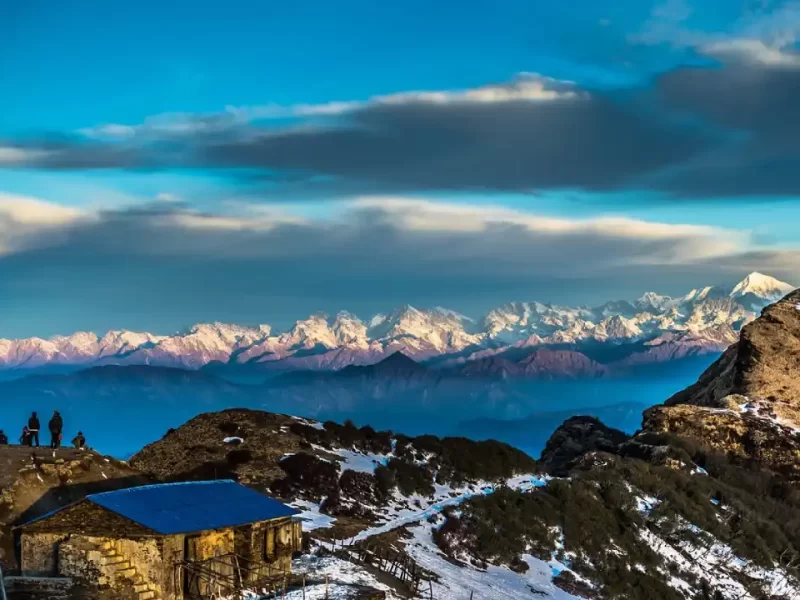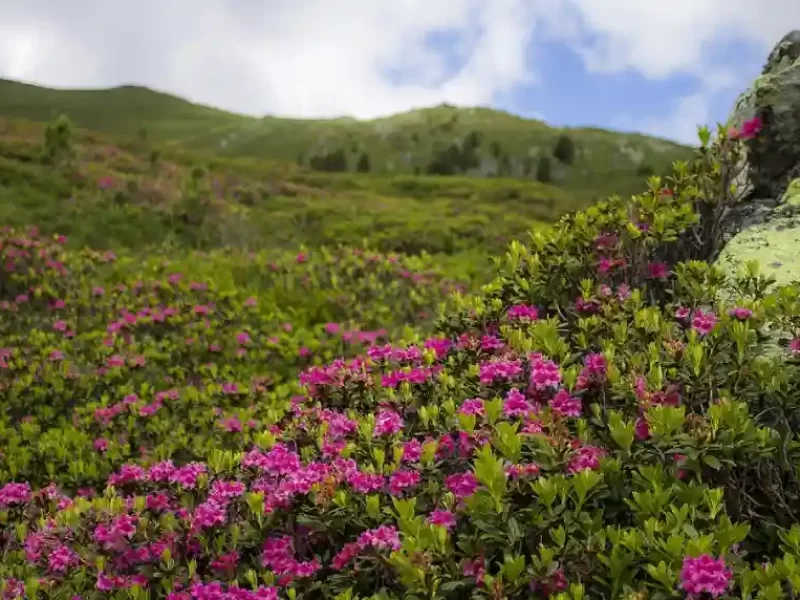Nepal, a landlocked country nestled in the heart of the Himalayas, is a paradise. Nature enthusiasts, adventure seekers, and cultural aficionados choose Nepal. Nepal offers a unique and captivating experience throughout the year. Its diverse landscapes, rich cultural heritage, and vibrant traditions attract everyone. Choosing the best time to visit Nepal is crucial to maximizing your experience and witnessing its beauty. Spanning a wide range of altitudes, Nepal experiences distinct seasons, each offering unique opportunities for adventure, cultural exploration, and natural wonders. However, choosing the best time to visit Nepal is crucial to fully appreciate its beauty and activities.

Spring season (March to May):
In Nepal, the months of March to May mark the spring season. This period boasts mild temperatures, blooming rhododendrons, and clear skies, providing ideal conditions for trekking and mountaineering. The lush greenery and vibrant flowers add a touch of magic to the landscapes, making it a photographer’s paradise.
Additionally, spring is the peak season for climbing expeditions, attracting mountaineers from around the globe to conquer the world’s highest peaks, including Mount Everest. This season is one of the best times to visit Nepal, offering an ideal climate for trekking, mountaineering, and sightseeing.
Spring is the peak season for climbing expeditions, attracting mountaineers from around the globe to conquer the world’s highest peaks, including Mount Everest. The renowned Everest Base Camp and Annapurna Circuit are at their best during the spring. The moderate temperatures create comfortable conditions for long hikes, and the clear visibility allows trekkers to view the breathtaking scenes of the Himalayan peaks. The vibrant flora and fauna add a touch of magic to the journey, making it a paradise for photographers.
Moreover, spring is the peak climbing season. The towering peaks of the Himalayas attract adventurers from around the world to climb them. Mount Everest is the highest point on earth, which offers an unparalleled experience for mountaineering enthusiasts
Culturally, Springtime in Nepal is also a time of celebration. People celebrate the festival of Holi, known as the Festival of Colors, with great enthusiasm. Travelers have the opportunity to immerse themselves in the vibrant atmosphere, witnessing locals joyfully throwing colored powders and water at each other.
Autumn Season (September to November)
In Nepal, the months of September to November mark the season of autumn. Autumn provides the perfect backdrop for trekking, sightseeing, and cultural exploration with clear skies, moderate temperatures, and stunning visibility. Trekkers particularly popularize this season because the trails are well-defined, and the views of the Himalayan peaks are breathtaking.
People consider this season another prime time to explore the country, especially for trekkers and cultural enthusiasts. The weather is neither too hot nor too cold, making it comfortable for extended hikes. Trekkers can embark on journeys like the Annapurna Circuit, Langtang Valley, and the famous Everest Base Camp trek, reveling in the beauty of the landscapes and cultural interactions.
The autumn season is also an ideal time for cultural exploration. Festivals like Dashain and Tihar also occur during the autumn, offering travelers a unique opportunity to witness and participate in traditional celebrations. The festivals provide travelers with a unique insight into Nepalese customs and traditions.
Clear skies and the perfect backdrop offer photographers and nature enthusiasts the opportunity to capture the essence of Nepal’s rich cultural heritage against the majestic backdrop of the Himalayas.

Monsoon Season (June to August):
In Nepal, the months of June to August mark the monsoon season. Nepal experiences the monsoon season, bringing heavy rainfall and a lush, green transformation to the landscapes. This season poses challenges for trekkers due to slippery trails and potential landslides, but it also offers a distinct charm for those seeking a different perspective.
Due to heavy rainfall, it is an excellent time to explore the lush, green landscapes and witness the country’s agricultural abundance, but it also brings potential challenges for trekking. The monsoon creates a refreshing and vibrant environment. Travelers interested in a quieter experience off the beaten path can visit during this time, keeping in mind that some regions may be inaccessible due to landslides and flooding.
The monsoon season is an excellent time to witness the country’s agricultural abundance, with terraced fields flourishing with crops. The rivers swell, creating impressive waterfalls and adding to the overall scenic beauty. Travelers who enjoy a quieter experience away from the crowds can explore the cultural and natural wonders of Nepal during this period.
However, it’s important to note that some regions may be inaccessible due to the risk of landslides and flooding. Popular trekking destinations like the Annapurna and Langtang regions may experience difficulties, so travelers should plan their itineraries accordingly.
Winter season (December to February):
The winter season, from December to February, offers a unique charm for those seeking a different perspective on Nepal. Higher altitudes can be quite cold, especially in the mountainous regions, While temperatures in the lowlands are mild. This season offers a different yet equally captivating experience for those who appreciate a serene and quieter atmosphere.
Winter is an excellent time for cultural exploration, as the skies are often clear, and the views of the snow-capped peaks are spectacular. Travelers can indulge in cultural festivals, visit ancient temples and monasteries, and experience the warmth of Nepalese hospitality.
Due to colder temperatures and the possibility of snowfall, trekking in high-altitude regions may be challenging. Other options available include lower-altitude trekking. During winter. The city of Pokhara, surrounded by the Annapurna and Machapuchare mountain ranges, is a popular destination. It offers a mild climate and stunning views.
Conclusion:
The best time to visit Nepal depends on individual preferences, interests, and the type of experience one seeks. Each season in Nepal offers a unique charm. Whether it’s the vibrant colors of spring, the clear skies of autumn, the lush landscapes of the monsoon, or the serene winter. Travelers can tailor their journey to make the most of their time in this enchanting Himalayan nation. Whether you are an avid trekker, a cultural enthusiast, or someone seeking tranquility amidst breathtaking landscapes, Nepal has something to offer year-round.
Introducing Trek Me Nepal: Embark on Unforgettable Journeys
At Trek Me Nepal, every step you take should be an adventure, every breath you inhale should be filled with the essence of nature, and every heartbeat should resonate with the rhythm of the mountains. We are a passionate team of explorers committed to crafting unforgettable trekking experiences in the breathtaking landscapes of Nepal.

Comment (0)